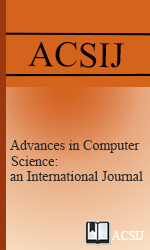Integrating Learning Style in the Design of Educational Interfaces
Abstract
Understanding learners’ characteristics and behaviour using hypermedia systems in education is still a challenge for most developers and educators. This study seeks to understand the influence of learning style on learners’ use and preference of a Computer Based Learning (CBL) program which was developed using two navigational structures (linear and non-linear). The study presents the findings of a case study conducted in Kuwaiti Higher Education.Data analysis was used to understand learners’ needs and perceptions in using navigational structures. The relationship between learners’ needs, learning styles, perceptions, and preferences in using the CBL program in regard to learner’s gender is discussed in this paper. We found that both males and females liked to see the two navigational structures in the CBL program. Moreover, we found that although males and females are both prefer using the non-linear structures, the data analysis shows that males actually used linear structures of the program and they are characterized as verbalized, field independent and serialist learners. Females, on the other hand, need to use the non-linear structure, and characterized as visualized, field dependent, and holist learners. It is interesting to find that learners (both males and females) may use specific navigational structures (linear and non-linear) accommodated in a CBL program although it may not be what they prefer.
Keywords
Full Text:
PDFReferences
R. S. Cobcroft , S. Towers, J. Smith and A. Bruns, "Mobile learning in review: Opportunities and challenges for learners, teachers, and institutions," Queensland University of Technology, Brisbane, 2006.
I. Simonova and P. Poulova, "Plug-in Reflecting Student's Characteristics of Individualized Learning," Procedia - Social and Behavioral Sciences, vol. 171, p. 1235 – 1244, 2015.
R. Al-Hajri and A. Al-Hunaiyyan, "Accommodating User Preferences in Designing Computer Based Learning Interfaces," Bangkok, Thailand, 2011.
P. Poulová and I. Šimonová , "Didactic reflection of learning preferences in IT and managerial fields of study," New York, 2013.
Y. Gülbahar and A. Alper, "Learning Preferences and Learning Styles of Online Adult Learners," in Education in a technological world: communicating current and emerging research and technological efforts, A. Méndez-Vilas, Ed., Ankara, Turkey, Formatex, 2011, pp. 270-278.
P. Rurato and L. Borges Gouveia, "The importance of the learner’s characteristics in distance learning environments: a case study," Barcelona, Spain, 2014.
S. Y. Chen, "A cognitive model for non-linear learning in hypermedia programmes," British Journal of Educational Technology, vol. 33, no. 4, pp. 449-460, 2002.
N. Ford, D. Miller and N. Moss, "The role of individual differences in internet searching: An empirical study," Journal of the American Society for Information Science and Technology, vol. 52, no. 12, pp. 1049-1066, 2001.
P. Schumacher and J. Morahan-Martin, "Gender, internet and computer attitudes and experiences," Computers in Human Behavior, pp. 17(1), 95-110, 2001.
S. Chen and N. Ford, "Modeling user navigation behaviors in a hypermedia-based learning system: An individual differences approach," International Journal of Knowledge Organization, vol. 25, no. 3, pp. 67-78, 1998.
N. Ford and S. Chen, "Matching/mismatching revisited: An empirical study of learning and teaching styles," British Journal of Educational Technology, vol. 32, no. 1, pp. 5-22, 2001.
S. Young and M. McSporran, "Confident men - successful women: Gender differences in online learning,," Dunedin, New Zealand, 2001.
H. F. Atan, F. Sulaiman, Z. A. Rahman and R. M. Idrus , "Gender Differences in Availability, Internet Access and Rate of Usage of Computers among Distance Education Learners," Educational Media International, vol. 39, no. 3-4, 2002.
M. Liu, "Examining the performance and attitudes ofsixth graders during their use of a problem-based hypermedia learning environment," Computers in Human Behavior, vol. 20, no. 3, pp. 357-379, 2004.
P. Russo and S. Boor, "How fluent is Your Interface? Designing for International Users," Netherlands, Amsterdam, 1993.
S. Messick, "Individuality in learning," San Francisco, 1976.
E. Frias-Martinez, S. Y. Chen and X. Liu, "Investigation of behavior and perception of digital library users: A cognitive style perspective," International Journal of Information Management, vol. 28, p. 355–365, 2008.
H. A. Witkin, C. A. Moore, D. R. Goodenough and P. W. Cox, "Field dependent and field independent cognitive styles and their educational implications," Review of Educational Research, vol. 47, p. 1–64, 1977.
D. H. Jonassen and B. L. Grabowski, Handbook of Individual Differences, Learning, and Instruction, New Jersey: Lawrence Erlbaum Associates, 1993.
N. Ford and S. Chen, "Individual differences, hypermedia navigation and learning: an empirical study," Journal of Educational Multimedia and Hypermedia, pp. 9, 281–311, 2000.
N. Ford, F. Wood and C. Walsh, "Cognitive styles and online searching," Online and CD_ROM Review, vol. 18, no. 2, p. 79–86, 1994.
R. J. Riding, Cognitive Styles Analysis. Learning and Training Technology, Birmingham, 1991.
R. J. Riding and S. G. Rayner, Cognitive styles and learning strategies, London: David Fulton, 1998.
F. P. Jing, Interface Design for Hypermedia Learning Systems: A Study of Individual Differences and Hypermedia System Features, London, UK: A thesis submitted for the degree of Doctor of Philosophy, School of Information Systems, Brunel University, 2005.
H. A. Witkin and D. R. Goodenough, "Cognitive Styles: Essence and Origins," New York, 1981.
C. G. Minetou, S. Y. Chen and X. Liu, "Investigation of the Use of Navigation Tools in Web-Based Learning: A Data Mining Approach," International Journal of Human-Computer Interaction, pp. 24(1), 48–67, 2008.
 Advances in Computer Science : an International Journal
Advances in Computer Science : an International Journal







